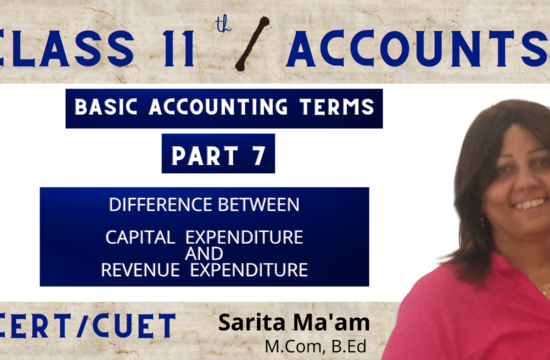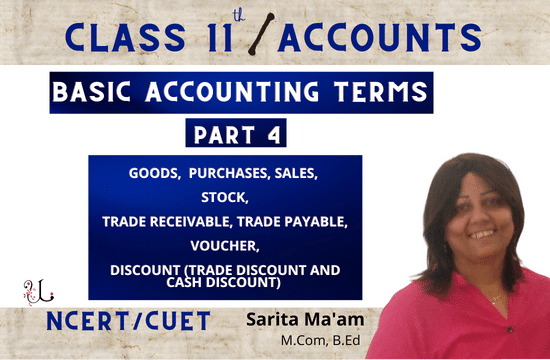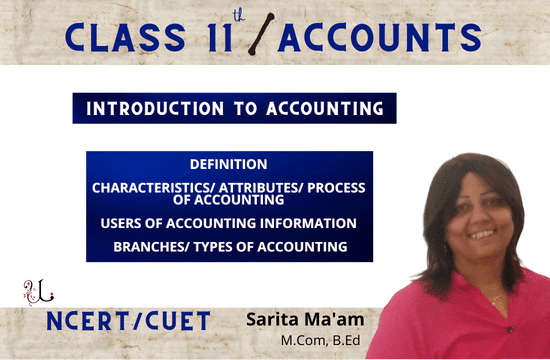- An entity in accounting language refers to an economic unit engaged performing economic activities like Nikunj Enterprises, Maruti Suzuki, Dabur India, DLF, Bajaj Auto etc
- Business Transaction The term business transaction refers to a financial transaction entered into between two parties. It involves exchange of goods or services for a monetary consideration.For example, purchase of goods, sale of goods, receipt from debtors, payment to creditors, purchase or sale of fixed asset, payment of expenses like salary, rent, wages, postage, etc; receipt of income like interest, commission, dividend, etc.
Characteristics/Features of a Business Transaction
- It involves economic activity so it is expressed in terms of money.
- It is entered into between two parties.
- It involves exchange of goods or services for money consideration.
- It affects the accounting equation of any business enterprise. Thus, it brings about changes in the position of assets and liabilities of the business entity.
- It has dual aspects or two sides
- The nature of each transaction is carefully analysed since it affect the financial position of a business unit.
MODE OF SETTLEMENT OF VALUE
(i) Cash Transaction – When the amount of the transaction is paid or received at the time of transaction itself, it is a cash transaction.
(ii) Credit Transaction – When the amount of transaction is promised to pay later, it is called a credit transaction.
RELATIONSHIP WITH THE ACCOUNTING UNIT
(i) External Transaction – Transactions between firm and other party are called external transaction e.g. goods sold to Ram, goods bought from Mohan. etc.
(ii) Internal Transaction – Transactions which does not involve second party are called internal transactions e.g. charging depreciation on plant and machinery, creating provision for doubtful debt on debtors, etc.
- Capital Capital refers to amount invested by the proprietor in the business. It may be in the form of cash or assets in money form. It is a liability of the business entity to its owner. It is also termed as internal liability, owner’s equity, proprietor’s fund or net worth. Owner’s equity refers to owner’s claim in the assets of the business. It is the excess assets over outside liabilities.
Capital = Assets – Outside liabilities
Example of Capital
Find the Capital of Nikunj from the following information :
Cash ₹ 20,000; Land & Building ₹ 1,00,000; Plant ₹ 60,000, Stock ₹ 50,000; Debtors ₹ 20,000; Bank Loan ₹ 70,000 and Creditors ₹25,000.
Solution :
Assets = Cash + Land & Building + Plant + Stock + Debtors
= 20,000 + 1,00,000,+ 60,000 + 50,000 + 20,000 = ₹2,50,000
Outside Liabilities = Bank loan + Creditors
= 70,000 + 25,000 = 1,00,000
Thus, Capital = Assets – Outside Liabilities
= 2,50,000 – 1,00,000 = 1,50,000
- Drawings Any cash or value of goods withdrawn by the owner for personal use or any private payments made out of business funds are called drawings.
- Liabilities
Liabilities mean the amount which the business owed (payable). Liability towards the owner /owners (proprietor or partners) of the business and outsiders (i.e. creditors, bills payable, bank overdraft, bank loan, salary outstanding, etc.) . In other words, amount of all claims are called liabilities.
We may express it as
Liabilities = Assets – Capital
The examples of liabilities are
Liabilities may be classified into two parts, namely—internal and external.
(i) Internal Liability – The amount due by business entity to proprietor or owners is called internal liability. It is represented by owners’ capital and free reserves. As per business entity concept, business firm is a separate entity and it is ‘distinct from its owners so amount due to them is called internal liability.
(ii) External Liability – The amount due to outsiders (except proprietor or owners) by the firm is called external liability. It includes creditors, bills payable, bank loan, expenses outstanding, etc.
On the basis of tenure (period of repayment), liabilities may be classified as Non-current Liability and Current liability.
(i) Non-current Liability – Non-current liabilities are those liabilities which are payable after a long period of time (normally more than a year from the end of the accounting period). It includes Debentures, Mortgage Loan, Long term Loan etc.
(ii) Current Liabilities –Current liabilities are those liabilities which are payable with in a year from the end of the accounting period. It includes creditors, bills payable, bank overdraft, short term loan, outstanding expenses, etc.
- Assets Assets are the properties (tangible assets and intangible assets) owned by an entity or enterprise. They are the economic resources of the business. In other words, anything which will enable the firm to get economic benefit in the future, is an asset.
Examples of assets are land, building, machinery, furniture, stock, debtors, cash and bank balances, trademarks, copyrights, goodwill, etc.
Definitions of Assets
“Assets are future economic benefits, the rights, which are owned or controlled by an organisation or individual.” —Finney and Miller
“Assets are property or legal right owned by an individual or a company to which money value can be attached.” —R. Brockington
“Assets are valuable resources owned by a business which are acquired at a measurable money cost.” —Prof. R.N. Anthony
Characteristics of Assets:
- It should be owned (i.e., property) by the business.
- It may be in tangible (physical) form or intangible form.
- It should have some value attached to it.
- It should be capable of being measured in money terms.
Classification of Assets
- Non-current Assets, : Non-current Assets are those assets which are held by an entity or enterprise not with the purpose to resell but are held either as investment or to facilitate business operations. In other words, those assets are held by the business from a long-term point of view. Examples of non-current assets are Fixed assets, Non-current Investments, Long-term Loans and Advances and Other Non-current Assets.
Fixed Assets: Fixed assets are those non-current assets of an enterprise which are held not to resell but with the purpose to increase its earning capacity. Fixed assets are further classified into:
- Tangible Assets: Tangible Assets are those assets which have physical existence, i.e., they can be seen and touched. Examples of tangible assets are land, building, machinery, computer, furniture, etc.
- Intangible Assets: Intangible Assets are those assets which do not have physical existence, i.e., they cannot be seen and touched. Examples of intangible assets are patents, goodwill, trademarks, Computer Software, etc.
- Current Assets: Current Assets are those assets which are held by an entity
- in the form of cash
- for the conversion into cash within a short period, i.e., one year.
- For their consumption in the production of goods or rendering of services in the normal course of business.
For example, goods are purchased with a purpose to resell and earn profit, debtors exist to convert them into cash, i.e., receive the amount from them, bills receivable exist again for receiving cash against it, etc.
Note: Prepaid expenses are also classified as Current Assets although they cannot be converted into cash. They are so classified because a part of the benefit from such expenses is available in the next accounting year.
- Fictitious Assets: Fictitious Assets are those assets which are neither tangible assets nor intangible assets. They are losses not written off in the year in which they are incurred but in more than one accounting period.
In the case of firms, an example of fictitious asset is Deferred Revenue Expenditure such as Advertisement Expenditure. Discount or Loss on Issue of Debentures is an example of fictitious asset in the case of companies.
EXERCISE
- The amount invested by the owner of the business is called………
CAPITAL
- The amount withdrawn by the owner of the business for personal use is called……..
DRAWINGS
- Goods withdrawn by the proprietor of the business for personal use is called…….
DRAWINGS
- Liabilities payable within a period of one year are ……………… liabilities
CURRENT
- Assets which are converted into cash with in a period of 1 year are called……… assets
CURRENT
- Assets which have no physical appearance are known as……. Assets
INTANGIBLE
- Assets which have physical appearance are known as …………… assets.
TANGIBLE
- Stock is a part of current/fixed asset.
CURRENT
- Goodwill is a tangible/intangible asset.
INTANGIBLE
- Bank overdraft is a ………liability.
CURRENT
- Capital invested in the business by the proprietor is an internal/external liability
INTERNAL LIABILITY
- Assets held for continued use in the business and not meant for resale are termed as ……..
FIXED ASSETS

Sarita Chugh M.Com, B.Edan is Accounts and Economics teacher having more than 30+ years of experience. She is Edupreneur and founded Unique Learning Academy in 2004. She believes that every child has the right to affordable education.










